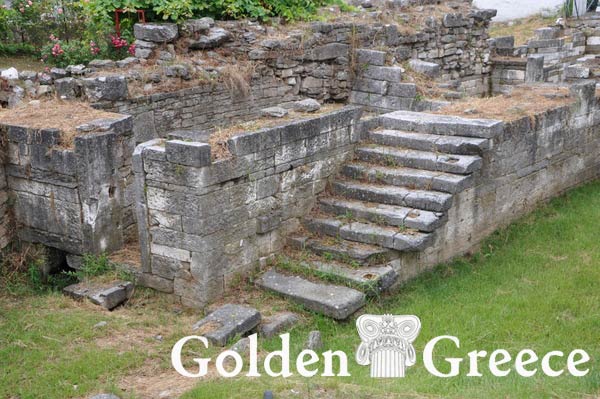
The market of Thassos was the political, administrative and religious center of the ancient city of the island. It is a monumental complex that took its final form over the course of many centuries. The earliest structures that have been identified in the area of the ancient Agora of Thassos date back to the 6th century BC. A gradual reconstruction of the market starting from the beginning of the 4th century BC, a time of general reorganization of the Thasian state, and reaching the Roman years (1st century BC), gave it the form of an almost rectangular square, surrounded by colonnades. The area is enriched with buildings, temples, monuments, statues throughout the Roman period up to the 3rd century AD. The market is destroyed in the middle of the 3rd century BC from the raid of the Herouls. At the beginning of the 5th century AD is being built with its building material, on the north side of it is the oldest basilica of the island, in the place of the "building with the backstage". In the 14th century AD part of the medieval fortification of the port passes through its northwest side.
The market of the ancient city of Thassos was the hub point of the homonymous city. The most important buildings of administrative and religious life were concentrated here. It is a public square measuring approximately 80 x 100 m. surrounded on all four sides by arcades which form the facade of public complexes. In front of these are aligned honorary and votive monuments, while the center of the square is occupied by small temples, altars and sanctuaries. Today, ruins are preserved from the arcades of the market and from buildings of a public or religious nature.
A paved street led from the closed port to a monumental propyla built in the 1st c. AD, as the main entrance to the site. On the north side of the street, a paved courtyard with a colonnade on three sides and a platform was built in Roman times. The northwest portico was built at the beginning of the 3rd century. BC It is preserved up to the height of the pilaster, and a few columns that belonged to it have been placed in their original position. It was an impressive building because of its great length and the absence of an intermediate colonnade to support the roof.
On the north side of the market there were buildings of an administrative nature. The rectangular building has been interpreted as a rectory. On the inner walls of the Doric building with the two lateral wings that protrude - ''Building of Backgrounds'' - were carved from the second half of the 4th c. BC up to the 3rd c. AD, the names of the lords as well as other public documents. Next to it was a complex of rooms, which later (1st century BC) acquired a portico as a facade.
The south-east side of the square was covered by a Doric portico which opened through 4 entrances and windows to a hypostyle, enclosed portico. At its northern end was the cenotaph of Glaucus (the pedestal and inscription are preserved), one of the first Parian settlers to arrive on the island, and he is mentioned in the poems of Archilochus as his fellow warrior. Behind the hypostyle portico stretched a public commercial building facing one of the city's main thoroughfares, a paved street that led from the sanctuary of Herakles to the passage of Theors.
The southwest side of the market is occupied by a 1st c. AD, with 33 monolithic columns and several pedestals of honorary monuments rising in alignment in front of her. It communicates with apartments, among which is the arched hall, which was a place dedicated to the worship of the emperor Hadrian, since his supernatural-sized statue was found there. A monumental entrance with two Ionic columns between pilasters, next to the apse hall, provided passage to a complex of public buildings, of Roman times, that extended on the south side of the market.
Important sanctuaries related to the public life of the city were concentrated in the market square. The mosque of Zeus Agoraios was originally an enclosure with a low fence (perhaps from the 4th century BC), which enclosed a small temple and an altar. Later a circular enclosure was built in its eastern corner.
The sanctuary of Theageni is placed in the area where there is a circular stepped altar. The statue of the Olympian who was adored by his compatriots as a hero-healer, son of Hercules, must have been erected here. A cylinder hoard with two inscriptions about the obolus offering, before the sacrifice in his honor, was found in the same area.
In Roman times, the Thasians honored the grandsons of Augustus, Gaius and Lefkius Caesar, with a large monument. Five semicircular platforms were established in the 1st c. BC in front of the southwest portico to accommodate the statues of prominent citizens. The market is destroyed in the middle of the 3rd century BC since the invasion of the Herouls, and its building material is used for the construction of houses and the basilica that was built in the place of the "building with the backstage" at the beginning of the 5th century. AD
Editor: Fotini Anastasopoulou











